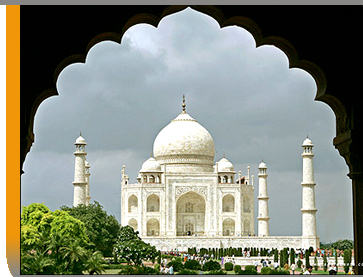|
|
History of Taj
The history of Taj Mahal, a monument which has been described as 'poetry in marble' was constructed by the Mughal emperor Shah Jahan. He erected this mausoleum in the memory of his beloved wife, Arjumand Bano Begum, popularly known as Mumtaz Mahal, who died in A.D. 1630. According to the history of Taj Mahal it is believed that her dying wish to her husband was "to build a tomb in her memory such as the world had never seen before." Indeed, centuries later, no tomb has been able to even remotely equal the glory of the marvelous Taj.
A study of the history of Taj Mahal reveals that it was started in A.D. 1631 and completed at the end of 1648 A.D. It is believed that the Taj is a result of twenty thousand workmen toiling day and night for twenty two whole years. A small town was built for the laborers called 'Mumtazabad' - named after the deceased empress. The town is now known as Taj Ganj.
Amanat Khan Shirazi was the calligrapher of Taj Mahal, his name occurs at the end of an inscription on one of the gates of the Taj. Poet Ghyasuddin had designed the verses on the tombstone, while Ismail Khan Afridi of Turkey was the dome maker. Muhammad Hanif was the superintendent of Masons. The designer of Taj Mahal was Ustad Ahmad Lahauri.
The material for the construction of the Taj was brought in from all over India and central Asia. It is believed that it took a fleet of 1000 elephants to transport it to the site! The history of Taj Mahal provides us with fascinating details about Mughal history and architecture.
Red sandstone was brought from Fatehpur Sikri, Jasper from Punjab, Jade and Crystal from China, Turquoise from Tibet, Lapis Lazuli and Sapphire from Sri Lanka, Coal and Cornelian from Arabia and diamonds from Panna. In all 28 kind of rare, semi precious and precious stones were used for inlay work in the Taj Mahal. The chief building material, the white marble was brought from the quarries of Makrana, in Rajasthan. Thus the history of Taj Mahal shows us the organizing capacity of the Mughal Empire and the vision of Emperor Shah Jahan, who was able to bring together many skilled artisans to create this beautiful monument to eternal love.
|

